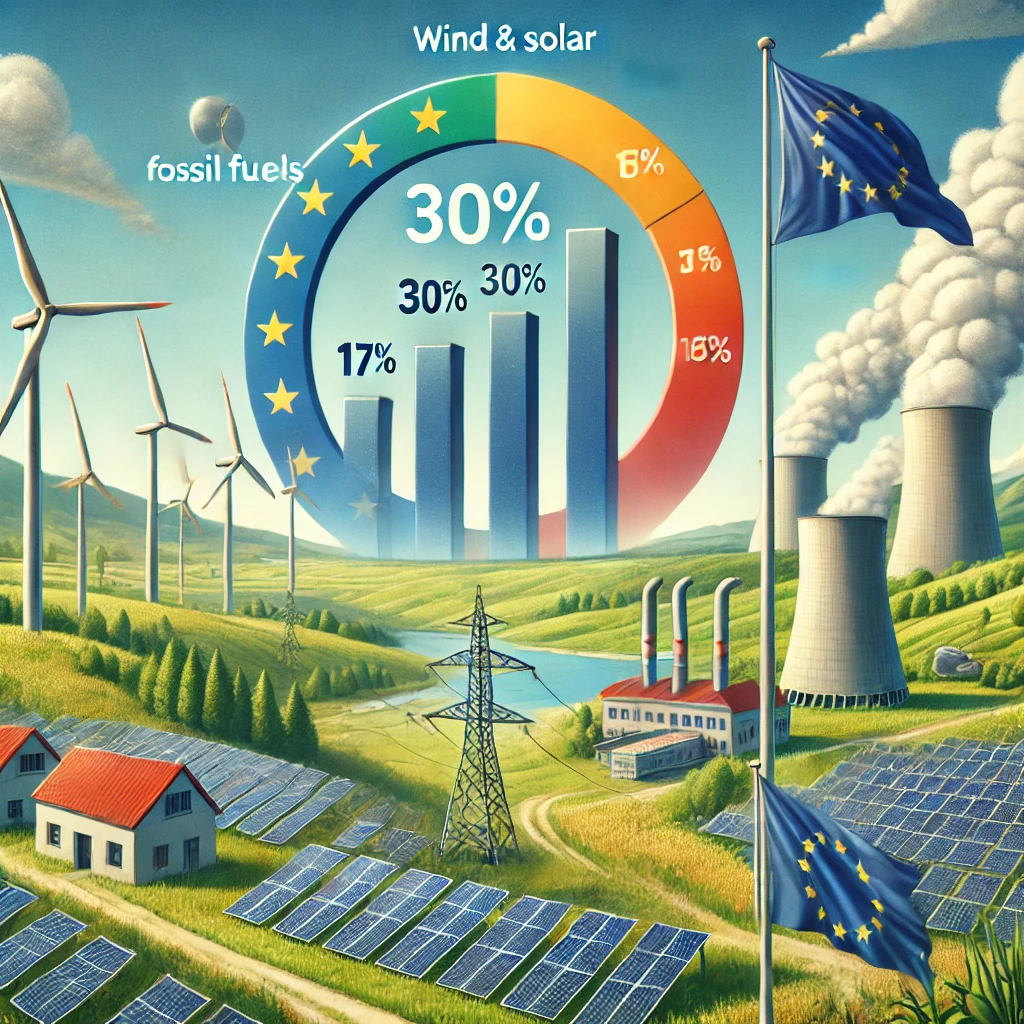Wind and Solar Overtake Fossil Fuels in the EU for the First Time
August 13, 2024 - In a historic shift towards renewable energy, wind and solar power have overtaken fossil fuels in electricity generation across the European Union. For the first time, these renewable energy sources accounted for 30% of the EU's electricity generation in the first half of 2024, while fossil fuels, including coal, natural gas, and oil, fell to a new low of 17%. This development marks a significant milestone in the EU's ongoing efforts to decarbonize its energy sector and combat climate change.
A Landmark Achievement in Renewable Energy
The rise of wind and solar power in the EU is part of a broader trend towards cleaner, more sustainable energy sources. The shift has been driven by a combination of factors, including increased investment in renewable energy infrastructure, government policies supporting green energy, and technological advancements that have made wind and solar power more efficient and cost-effective.

According to Ember Climate, the think tank that tracks global electricity generation, this achievement represents a major step forward in the EU's energy transition. The increased share of renewables in the energy mix has been instrumental in reducing the EU's carbon emissions, which are now nearly a third lower than in the first half of 2022.
The EU's commitment to renewable energy is also reflected in its policy goals. The European Green Deal, a comprehensive strategy to make the EU climate-neutral by 2050, has set ambitious targets for expanding renewable energy capacity and phasing out fossil fuels. The success of wind and solar power in 2024 demonstrates that the EU is on track to meet these goals, although challenges remain.
The Decline of Fossil Fuels and the Role of Coal
The decline in fossil fuel use is a crucial part of the EU's decarbonization strategy. Natural gas, once seen as a bridge fuel in the transition from coal to renewables, has seen its share of electricity generation decrease as wind and solar power have become more dominant. Similarly, oil, which plays a minor role in electricity generation, has continued to decline.
However, despite the overall reduction in fossil fuel use, coal power remains a significant challenge. While its share of the energy mix has decreased, coal continues to meet high demand in certain areas, particularly during periods of low wind or solar output. This reliance on coal during peak demand times underscores the need for further investments in energy storage and grid infrastructure to ensure a stable supply of renewable energy.
According to the International Energy Agency, while renewable energy sources are expected to continue their rapid expansion, coal power generation is unlikely to decline sharply in the short term due to persistent demand and the energy security concerns of some member states. The challenge for the EU will be to balance the need for reliable energy with the imperative to reduce emissions and phase out coal.
The Path Forward: Opportunities and Challenges
The EU's achievement in generating more electricity from wind and solar than from fossil fuels is a significant milestone, but it also highlights the challenges that lie ahead. To maintain and accelerate this progress, the EU will need to address several key issues.
First, the intermittency of renewable energy sources like wind and solar must be managed through investments in energy storage technologies and grid modernization. This will help ensure a consistent supply of electricity even when renewable generation is low.
Second, continued policy support is essential. The EU must maintain its focus on renewable energy incentives, carbon pricing, and regulations that encourage the transition away from fossil fuels. This includes addressing the social and economic impacts of phasing out coal, particularly in regions that are heavily dependent on coal mining and power generation.
Lastly, international cooperation will be crucial. The EU's leadership in renewable energy can serve as a model for other regions, but global efforts are needed to tackle climate change effectively. By sharing technology, knowledge, and resources, the EU can help drive a worldwide transition to clean energy.
For further details on the EU’s energy transition and the impact of renewable energy, visit Ember Climate and International Energy Agency.
Conclusion
The shift towards wind and solar power in the EU marks a significant milestone in the global effort to combat climate change. As the EU continues to lead in renewable energy, it faces both opportunities and challenges in ensuring a stable, sustainable energy future. The path forward will require continued innovation, investment, and international cooperation to build on this success and meet the ambitious goals of the European Green Deal.
